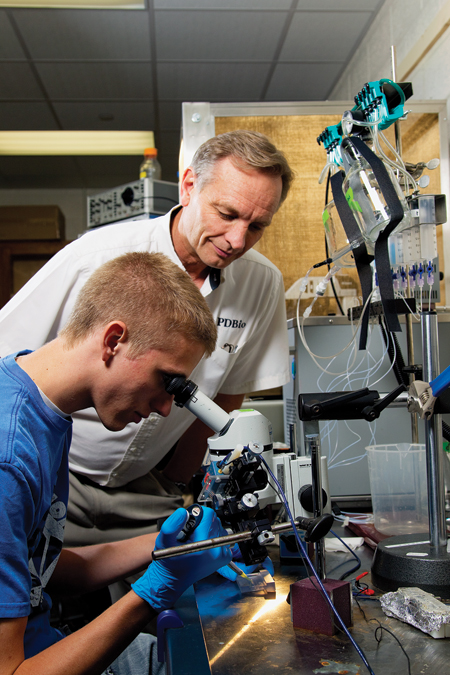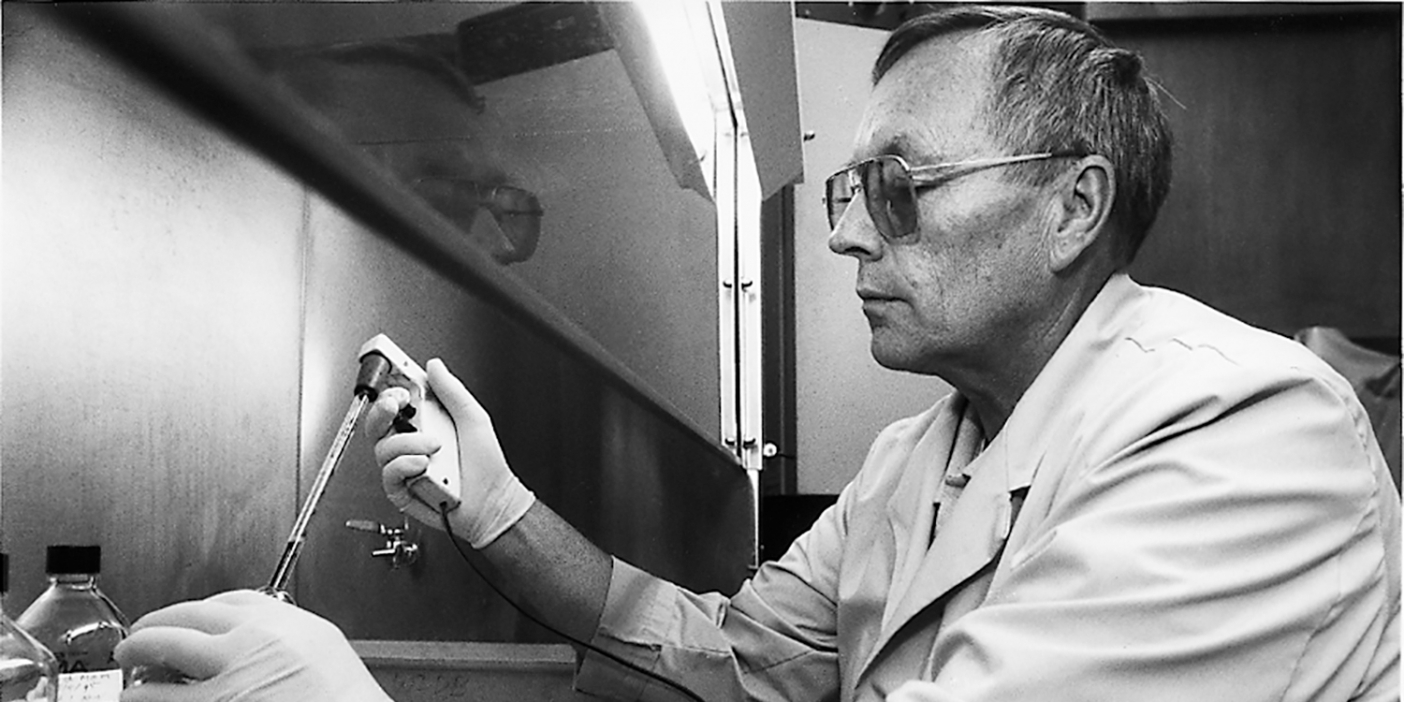
The avian flu virus, and other strains of influenza, are opened through protein “windows” called M2 channels. Plug the channels, stop the flu.
Between researchers at BYU and Florida State University, the flu may have finally met its match.
Airborne, it infects humans and animals alike, it mutates and evades medical solutions, and it caused a pandemic in 2009, when the H1N1 variation left people the world over scrambling for a vaccine. But there is hope: according to David D. Busath, BYU professor of physiology and developmental biology, victory over the influenza virus, in all its mutations, may be within sight.
With a 10-year, multimillion-dollar grant from the National Institutes of Health, researchers at BYU and Florida State University are getting a good look at an important protein in the virus, using nuclear magnetic resonance—similar to MRI technology—to deduce the protein’s structure. Busath and his students at BYU make sure the virus protein samples being examined function the way they would in real cells. Their research on this scientific hot topic got them published in the journal Science and in Biochimica et Biophysica Acta, an international journal.

Professor David Busath and student Doug R. Bretzing (’12) are part of a team that is cornering the influenza virus.
So how does this mutating virus work, and how will this research help find a solution? Busath explains that “a virus is simply a small vesicle,” a small fluid sac filled with virus RNA. When you breathe them in, vesicles of the flu virus enter your respiratory system’s cells. There, cellular acid enters the vesicle’s membrane through protein “windows” called M2 channels. The acid loosens up the vesicle’s contents—its genome, or reproductive blueprints—and releases them into the cell. The influenza blueprint gets translated by the cell and then “pirates . . . the cell’s machinery to reproduce,” says Busath, causing the infected cell to create new virus vesicles that spread throughout your lungs. “Pretty soon you’ve got [the flu virus] through your whole bronchial tree,” Busath continues. “You have an inflammatory reaction to it. That’s what makes you so sick for 10 days.”
There is a way to stop this pirate: prevent it from leaving its vesicle ship—in other words, plug the M2 channel. Previously, amantadine and rimantadine, two drugs common in flu medications, effectively blocked these channels. However, in 2005 and 2006, the M2 
protein mutated, making these drugs ineffective.
Using nuclear magnetic resonance, researchers are deducing the new attributes of the M2 channel and searching for compounds that will bind to and plug the channel. It’s finding a new cork for a new hole. “We just have to find drugs for five or six different variants,” says Busath. “It might be easy,” he laughs, “but it hasn’t been done yet.”
And what if the influenza virus mutates again? “It probably will,” confesses Busath. However, the virus has only a few mutations it can achieve and still reproduce. “We think we know what they are, so we think we have it cornered,” says Busath.
Until the solution is found, Busath’s recommendations are to “wash your hands extensively, cover your coughs, stay away from other people for two to three days after you come down with symptoms, and notify the people you might have infected . . . so that they can take action.”









